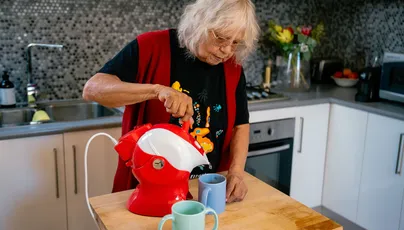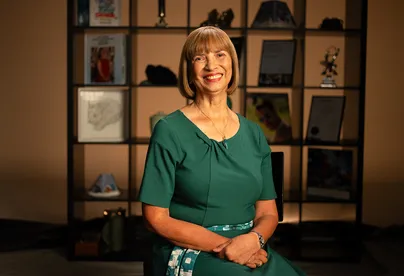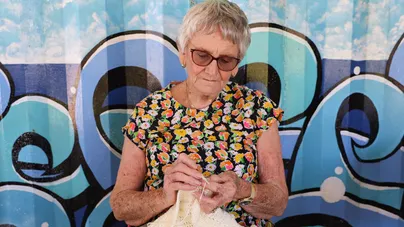Here’s why assistive technology matters for health and wellbeing for women after menopause.
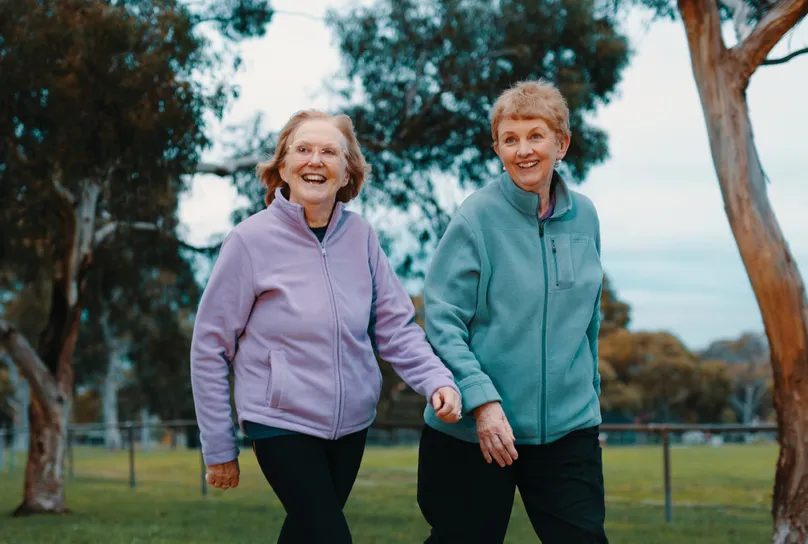
For women aged 55 and over, health can sometimes feel confusing. Hormonal changes caused by menopause can disrupt every aspect of life. This includes everything from sleep and mood to bone density and heart health. But there are steps you can take to make this stage of life easier.
One way to take charge of your health is by using practical tools sometimes referred to as assistive technology. These tools can help you stay connected to the people and routines that give your life meaning.
What is assistive technology?
Assistive technology (AT) refers to products that help with daily living tasks. These tools are designed to support independence, safety, and quality of life.
AT might be as simple as a non-slip bathmat to protect you from falls. It can also be as sophisticated as a wearable device that tracks physical activity to monitor your health.
How can assistive technology support women over 55?
AT can help in ways that are:
- Preventative - by helping to avoid health problems
- Supportive - by offering solutions when health changes occur
How does AT prevent health problems?
For women over 55, AT can play a vital role in preventing injury and illness through:
- Early detection of health risks
- Risk reduction, such as falls prevention
- Lifestyle support, like activity tracking and symptom monitoring
How does AT support daily life?
AT can also help women over 55 maintain independence in daily life. It does this by promoting:
- Mobility, by making it easier to move around and do tasks for yourself
- Self-care such as washing your hair, by making these activities safer to do
- Participation in meaningful activities despite age-related changes
Together, these tools support overall wellbeing by making everyday tasks easier.
5 assistive products for older women's health
Here are some effective, low-cost options that can help you feel more in control of your health day-to-day.
1. Digital health apps
How would you like your own personalised, pocket-sized health coach? Smartphone and tablet apps like Healthdirect's Symptom Checker offer tailored:
- Information
- Advice
- Symptom tracking
If you already use these types of apps, you're in good company. The Australian Women and Digital Health Project found that women aged 21 to 74 years actively use apps for:
- Calorie tracking
- Symptom checking
- Heart rate monitoring
- Pelvic floor exercises
That's to say – these apps are not just used for treatment. According to a 2019 study from the Journal of Medical Internet Research, women use them to better understand and feel empowered about their bodies.
2. Wearables
Wearables refer to electronic devices worn on the body to collect health information. Common examples include Fitbits, Apple Watches, and continuous glucose monitors.
Wearables can help you measure your:
- Activity levels
- Heart health
- Sleep quality
Not only can wearables measure health markers, but they can also improve them. For example, one 2021 study published in the Journal of Cancer Survivorship found a wearable device helped breast cancer survivors sleep better.
Wearable devices can also be used for fall detection. This includes personal alarms, some smart watches, or even gait-monitoring insoles.
Gait-monitoring insoles are shoe inserts with built-in sensors. They can track small changes in how you walk. This information could allow your healthcare provider to adjust your treatment as needed.
3. Home improvements or adjustments
After menopause, oestrogen levels drop. As oestrogen helps keep bones strong, this can lead to weaker bones and a higher risk of fractures.
You can reduce your risk of falling and causing a fracture by making some adjustments to your home, such as:
- Removing trip hazards such as cords or clutter lying around
- Improving lighting, such as by installing smart lighting that can be turned on and off from a distance
4. Personal care and daily living aids
These items can help you stay independent in activities that make you feel like yourself:
- Adaptive clothing or tools to help make dressing easier
- Ergonomic grooming tools that fit the natural shape of the hand
- Kitchen aids that take the strain out of preparing food, cooking, and cleaning up after meals
5. Heating and cooling equipment
According to Jean Hailes for Women’s Health, around 80% of women experience hot flushes and night sweats during menopause.
You can improve your comfort and sleep through devices that regulate body temperature. For example:
- Cooling bedding that prevents heat from being trapped
- Fabrics that absorb and release heat and moisture
- Wearable garments and accessories that work like personal air conditioners
What's the takeaway?
AT offers many choices to transform your daily life.
By embracing these tools sooner rather than later, you can prevent and manage health problems and stay connected to the things you love.
Want to learn more about women’s health during menopause? Check out our article on Jean Hailes for Women's Health and the trusted support they offer.
Learn about Jean HailesExplore more with LiveUp
Explore LiveUp's assistive products database. These products have been hand-picked by health experts to make everyday life easier.
Explore assistive productsReferences
De Villiers, T. J. (2024). Bone health and menopause: Osteoporosis prevention and treatment. Best Practice & Research Clinical Endocrinology & Metabolism, 38(1), 101782. https://doi.org/10.1016/j.beem.2023.101782
Department of Health (State Government of Victoria). (2024, August 7). Menopause and osteoporosis. Better Health Channel. https://www.betterhealth.vic.gov.au/health/conditionsandtreatments/menopause-and-osteoporosis
Jean Hailes for Women’s Health. (n.d.). Managing hot flushes and night sweats. Jean Hailes for Women’s Health. Retrieved August 14, 2025, from https://www.jeanhailes.org.au/health-a-z/menopause/managing-your-symptoms#managing-hot-flushes-and-night-sweats
Livingston, G., Huntley, J., Sommerlad, A., Ames, D., Ballard, C., Banerjee, S., ... & Mukadam, N. (2020). Dementia prevention, intervention, and care: 2020 report of the Lancet Commission. The Lancet, 396(10248), 413–446. https://doi.org/10.1016/S0140-6736(20)30367-6
Lupton, D., & Maslen, S. (2019). How women use digital technologies for health: Qualitative interview and focus group study. Journal of Medical Internet Research, 21(1), e11481. https://doi.org/10.2196/11481
Nguyen, N. H., Vallance, J. K., Buman, M. P., Moore, M. M., Reeves, M. M., Rosenberg, D. E., Boyle, T., Milton, S., Friedenreich, C. M., English, D. R., & Lynch, B. M. (2021). Effects of a wearable technology-based physical activity intervention on sleep quality in breast cancer survivors: The ACTIVATE Trial. Journal of Cancer Survivorship, 15(2), 273–280. https://doi.org/10.1007/s11764-020-00930-7
Subramaniam, S., Faisal, A. I., & Deen, M. J. (2022). Wearable sensor systems for fall risk assessment: A review. Frontiers in Digital Health, 4, 921506. https://doi.org/10.3389/fdgth.2022.921506
Warrington, D. J., Shortis, E. J., & Whittaker, P. J. (2021). Are wearable devices effective for preventing and detecting falls: An umbrella review (a review of systematic reviews). BMC Public Health, 21, 2091. https://doi.org/10.1186/s12889-021-12169-7
How to use this information
LiveUp provides free information to help you make informed decisions about your health. This information is for general and educational purposes only, is not intended to provide a comprehensive guide, and does not replace medical advice. Everyone is different, so some of these tips may work better for you than others. You should use your own judgment and seek medical advice when applying this information to yourself, to determine if it is suitable in your circumstances. Your use of, or reliance on, this information is solely at your own risk. Independent Living Assessment Incorporated is not responsible or liable for any injury, loss, or damage caused as a result of your use of, or reliance on, this information.
Download and print this article:
You can print out the PDF and stick it to your fridge or file away the tips to revisit at a later time.
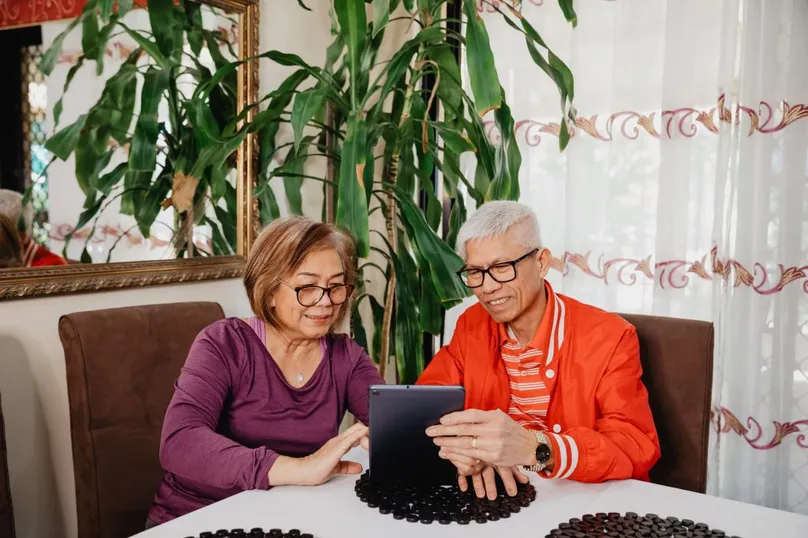
Read more Maintain my health articles
Did you enjoy this article? You may also like reading similar healthy ageing articles.
See all Maintain my health articles